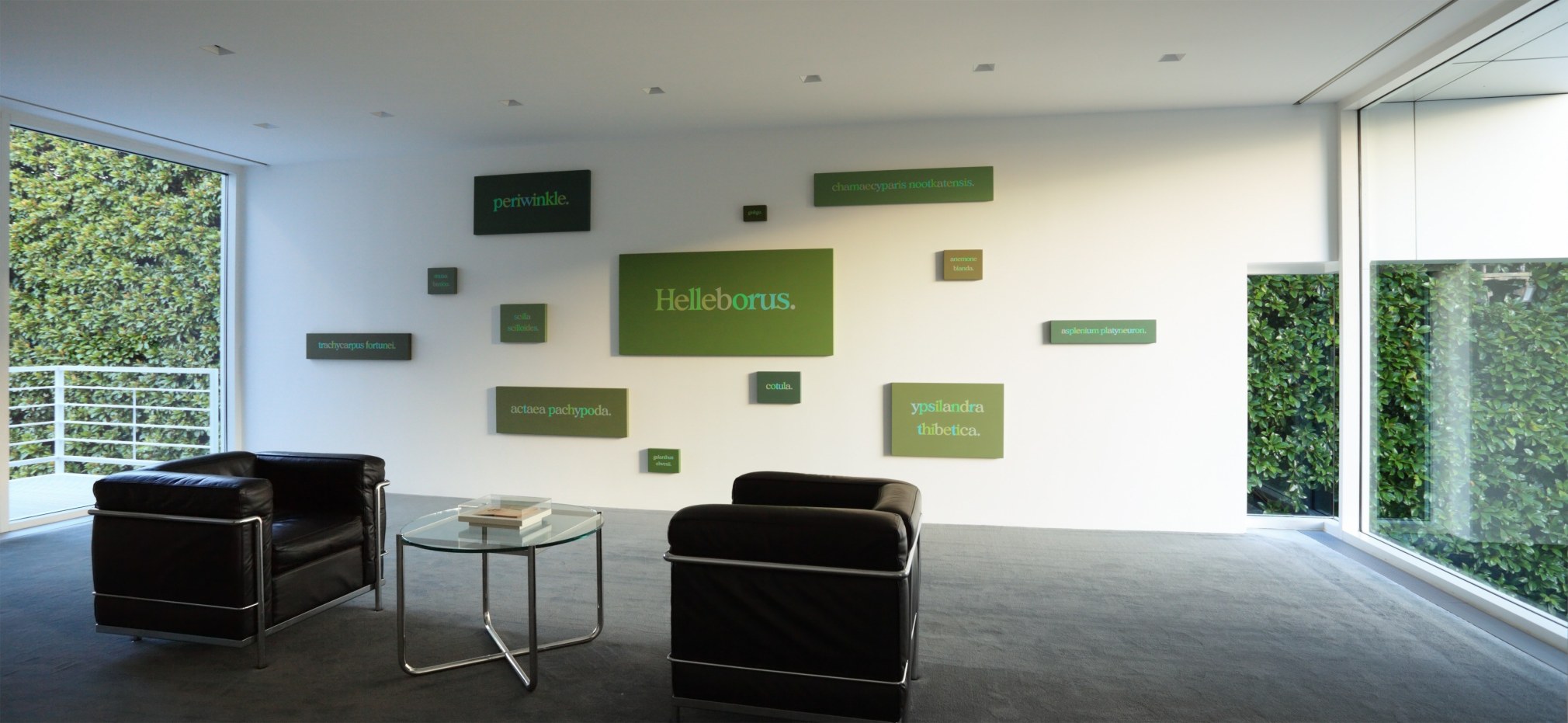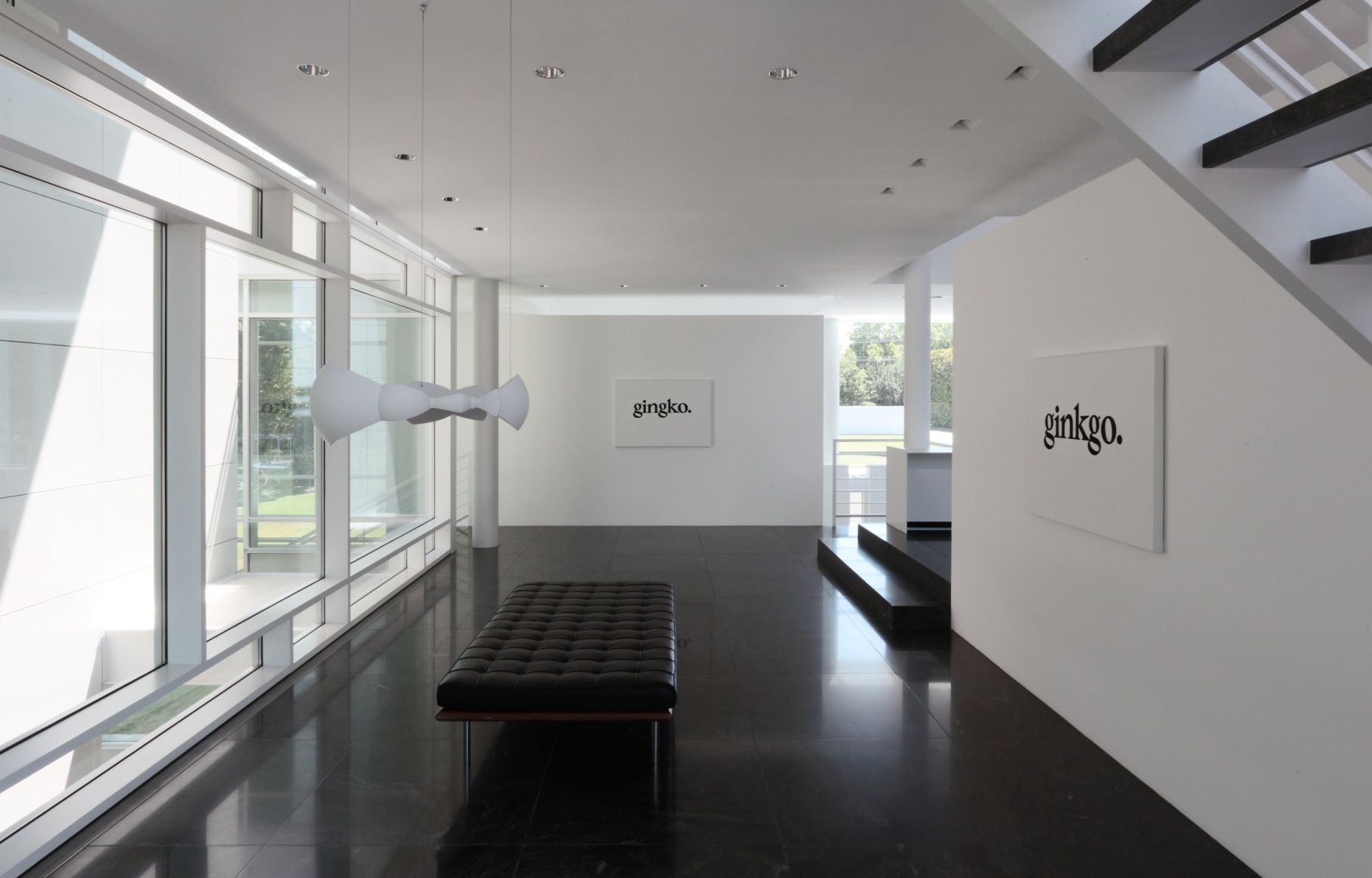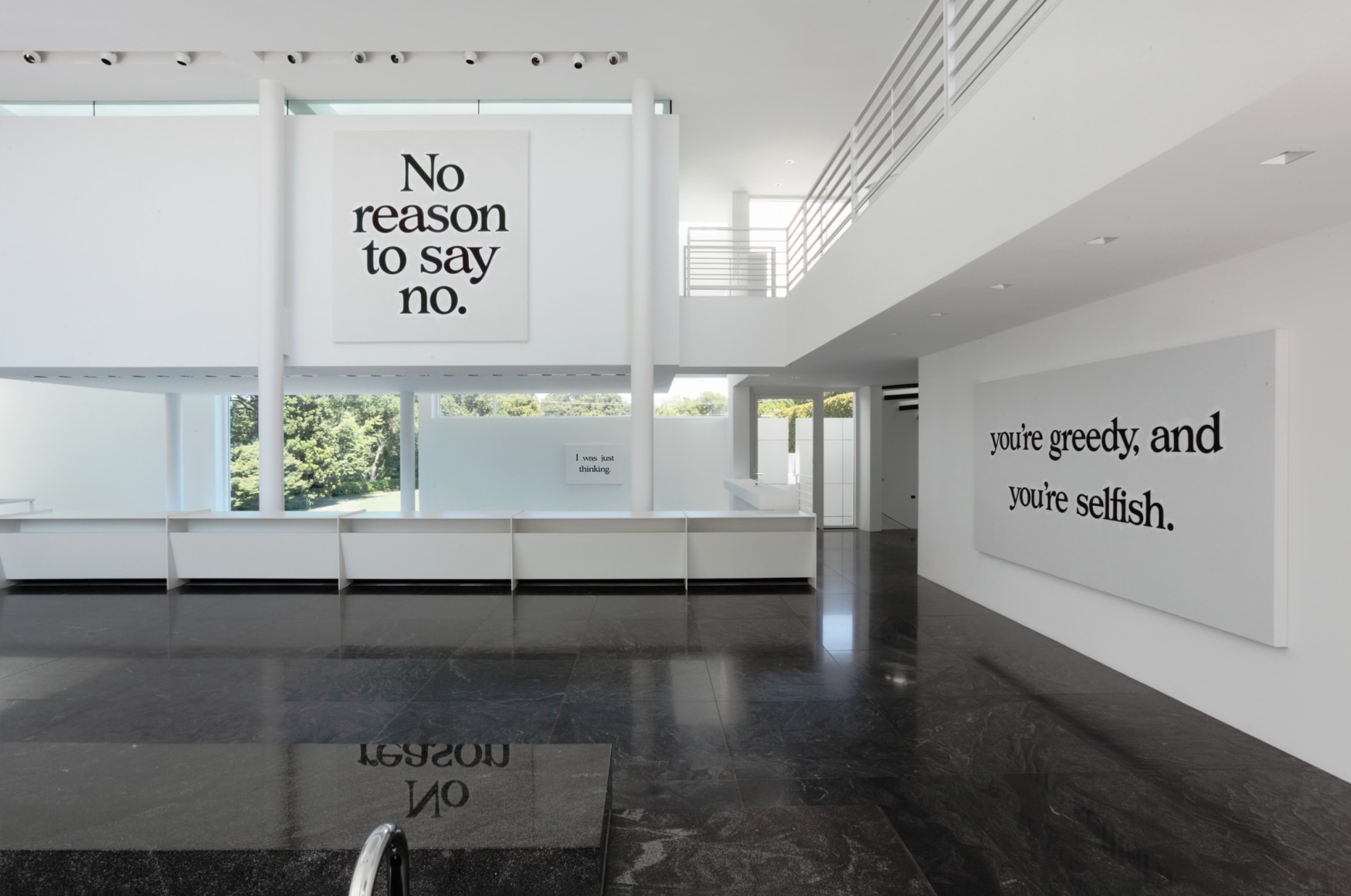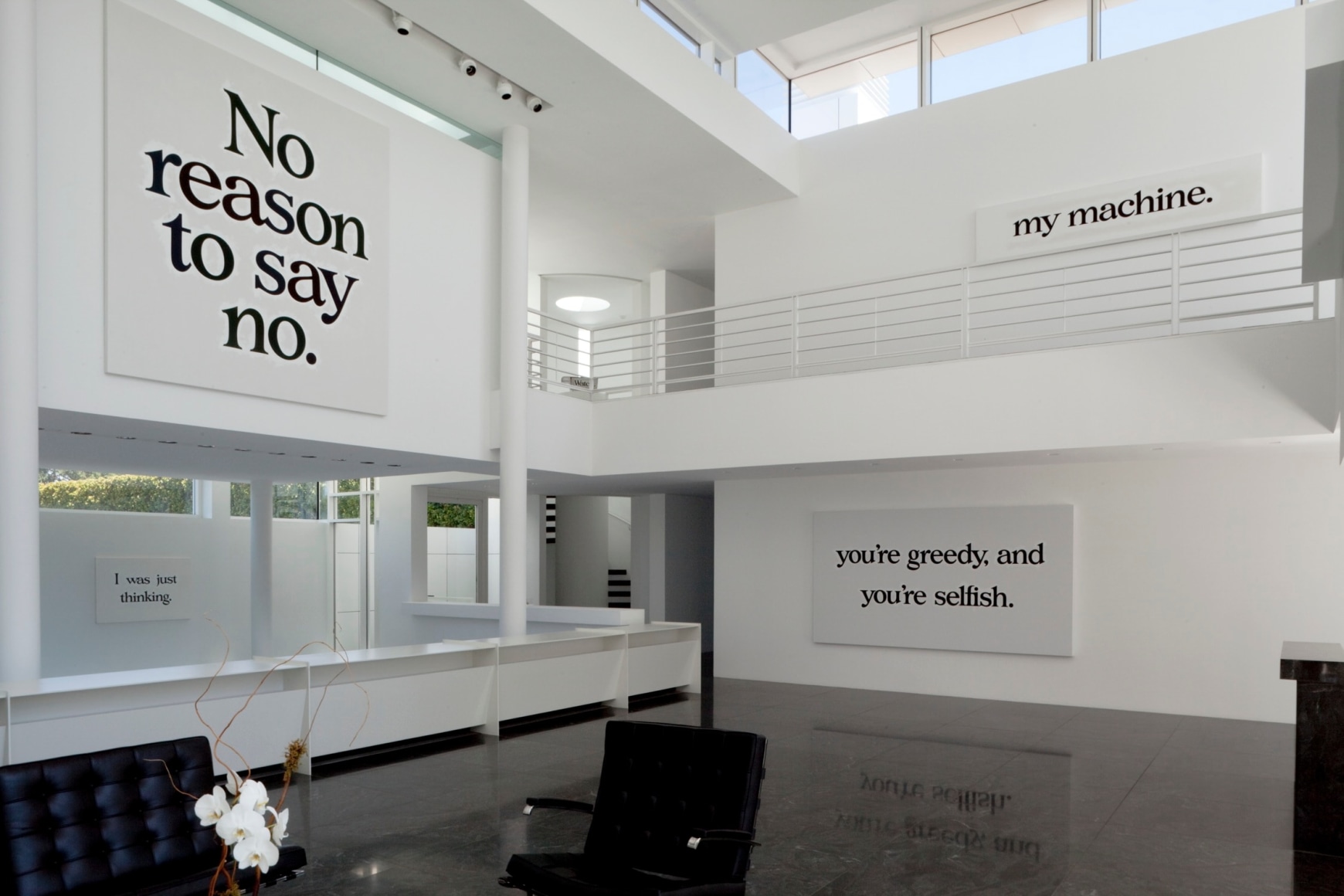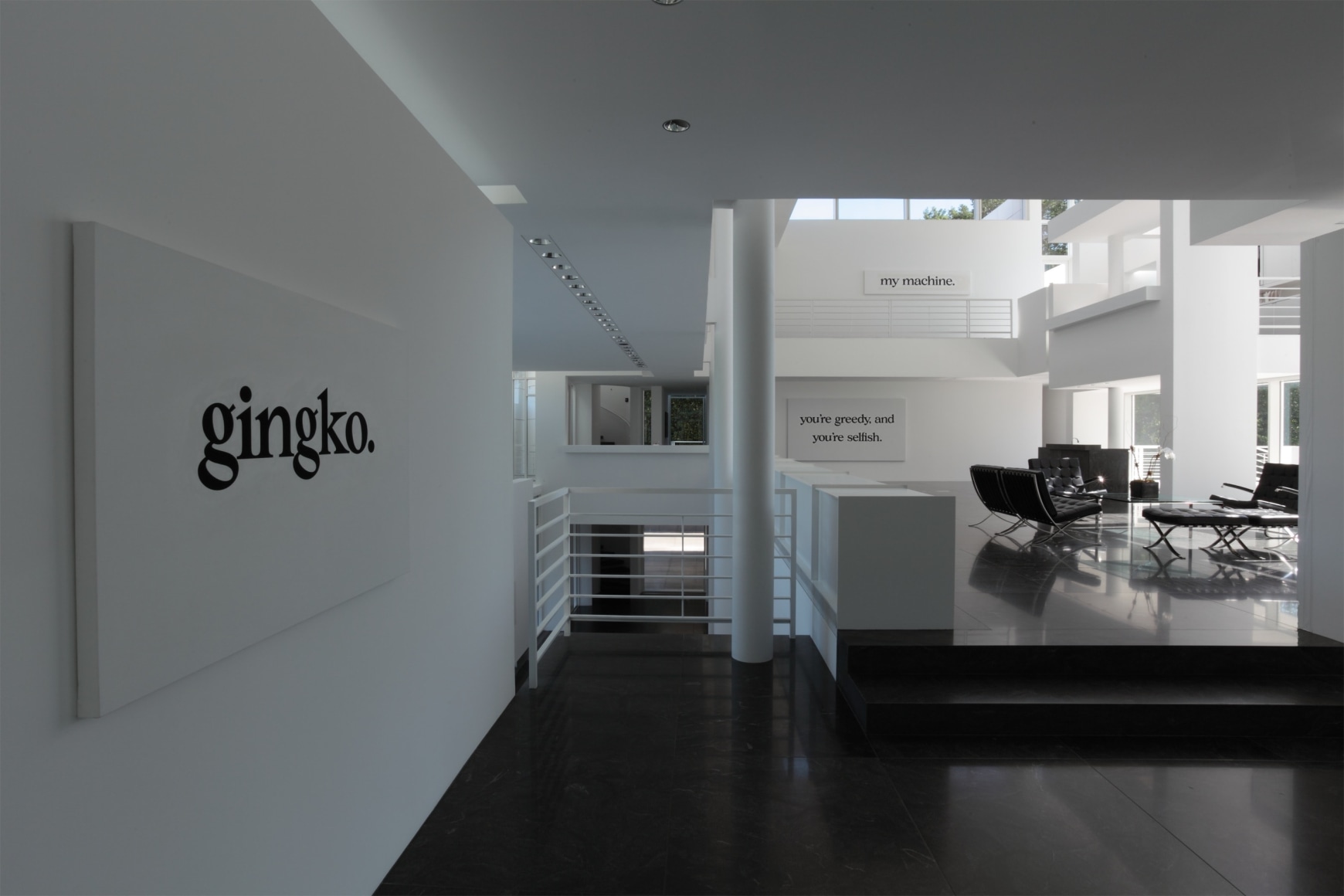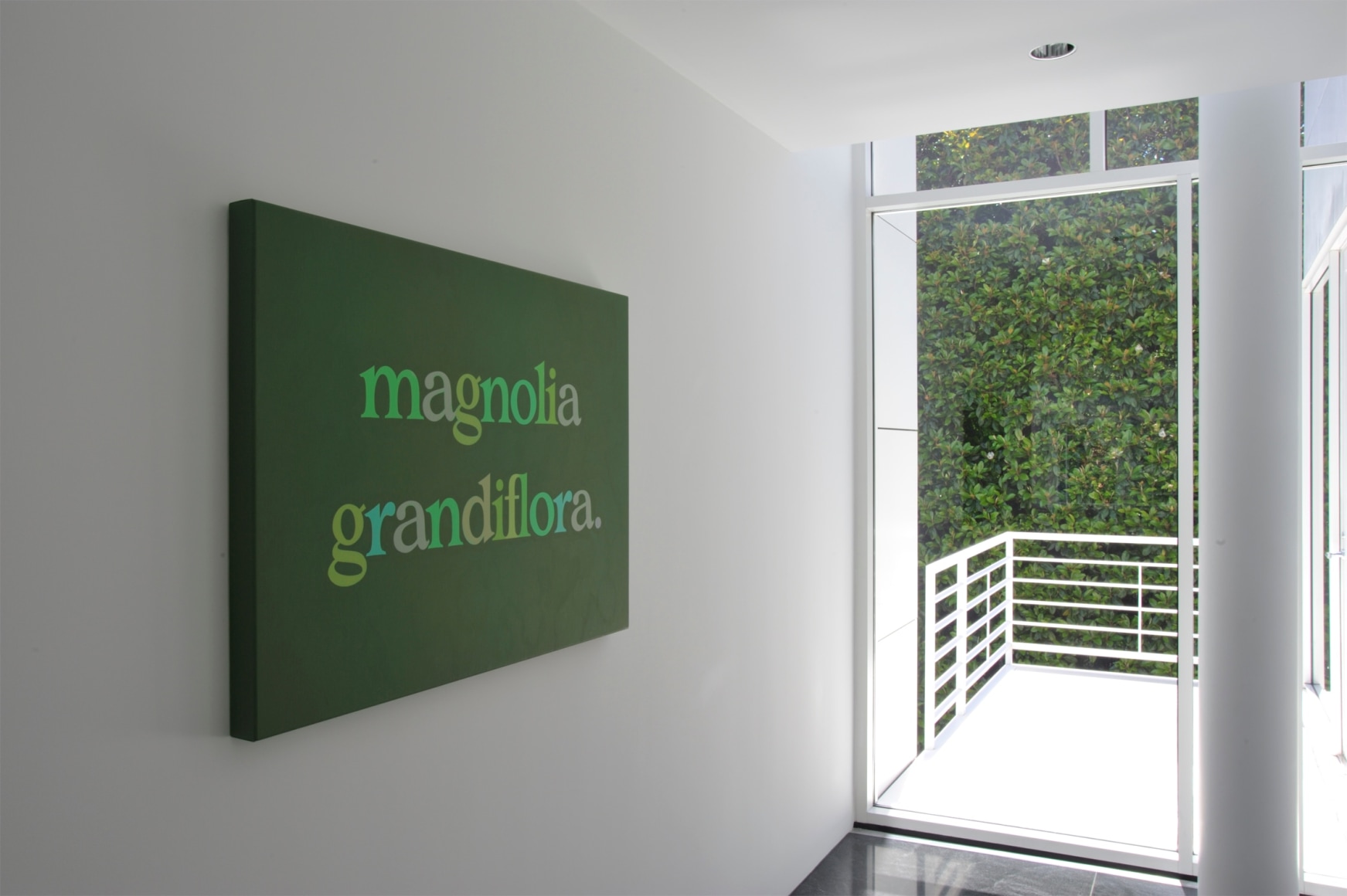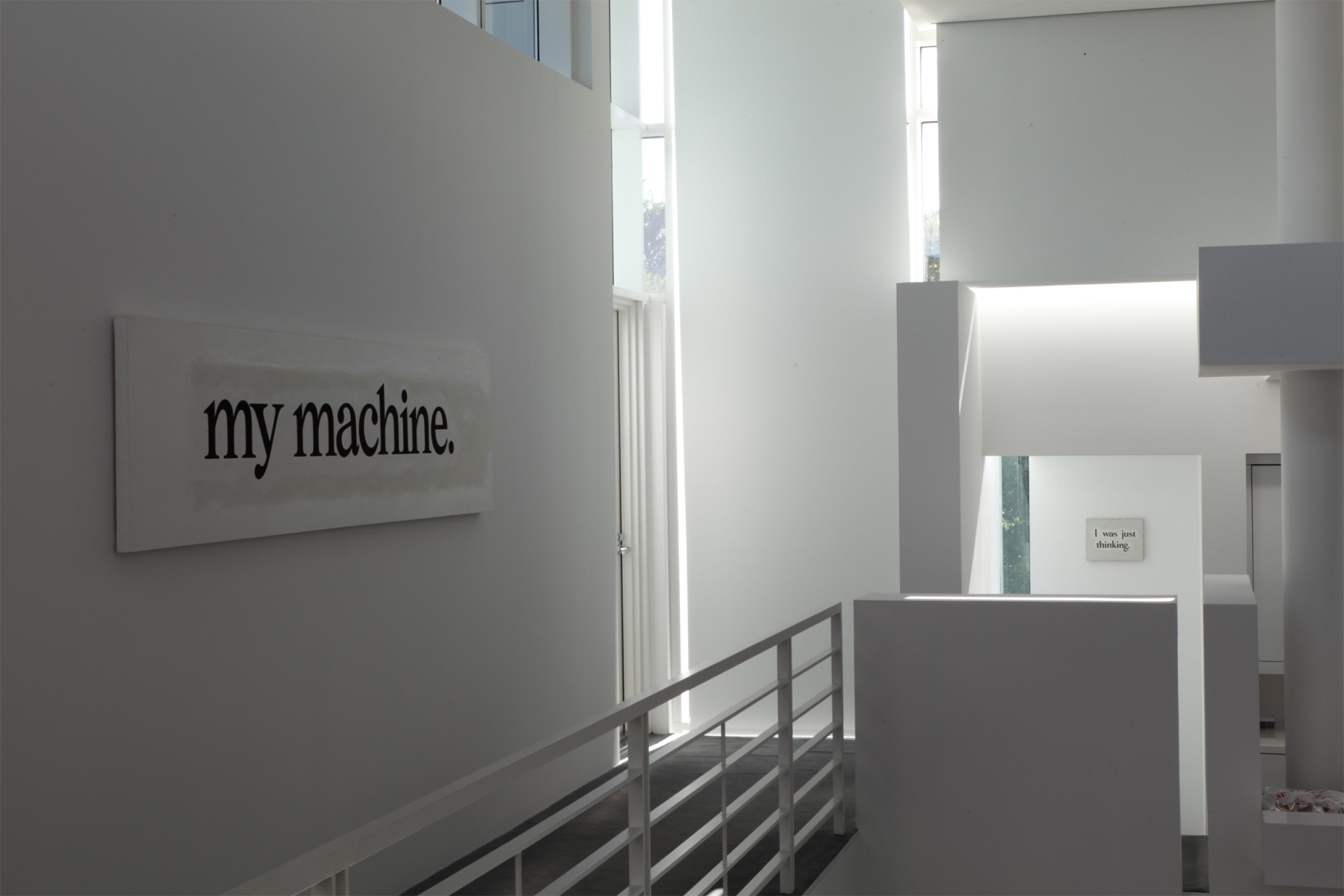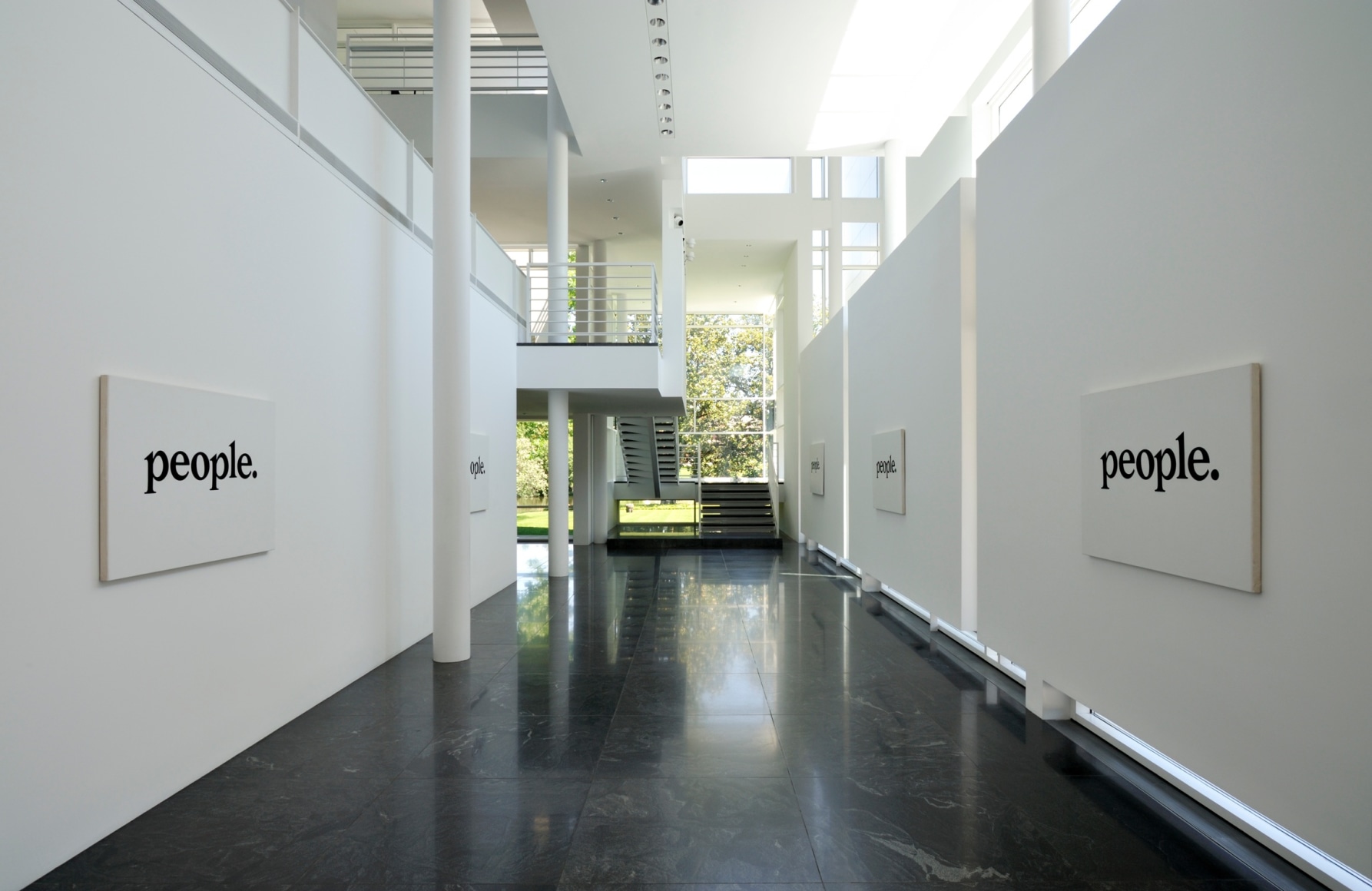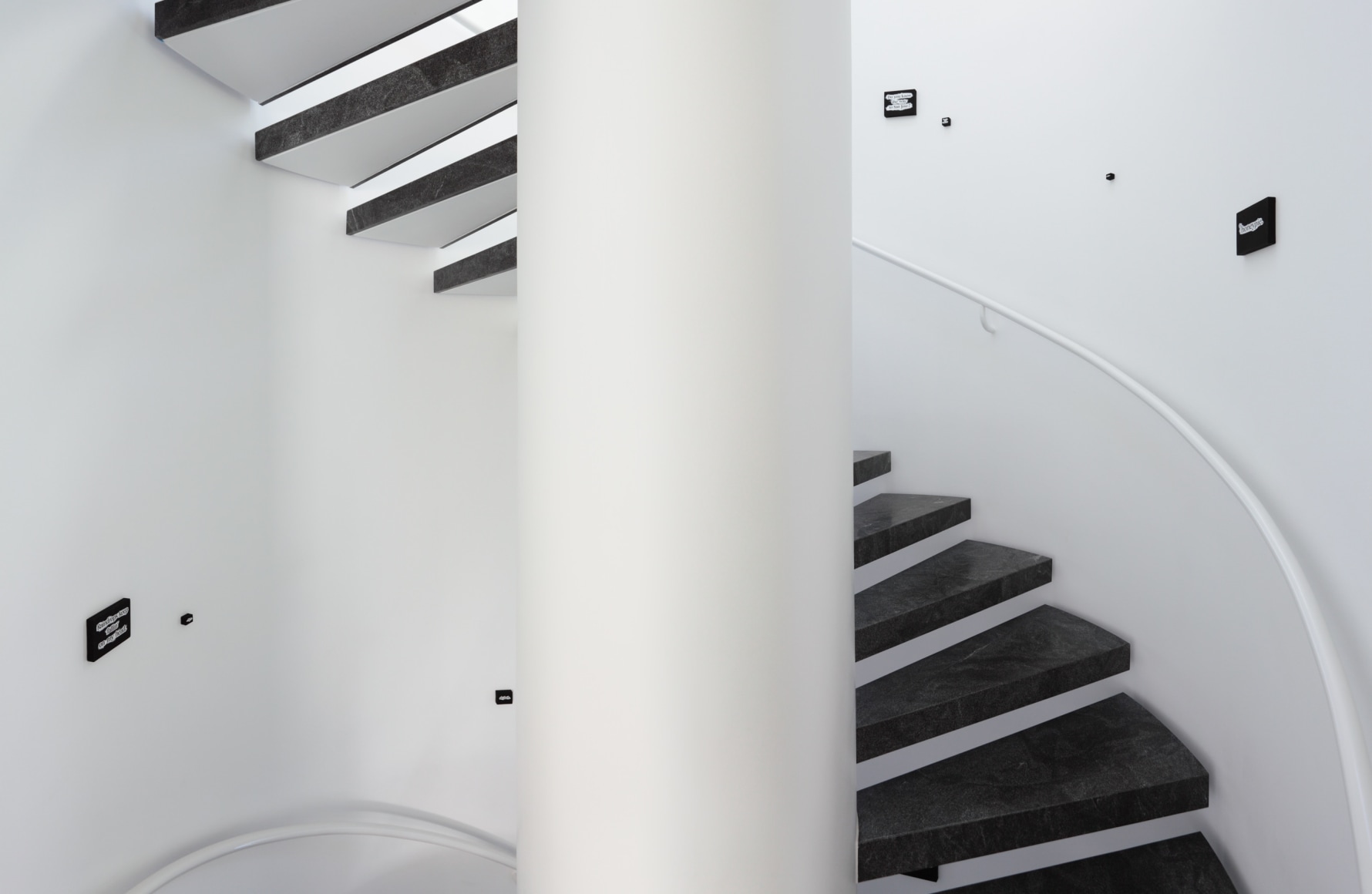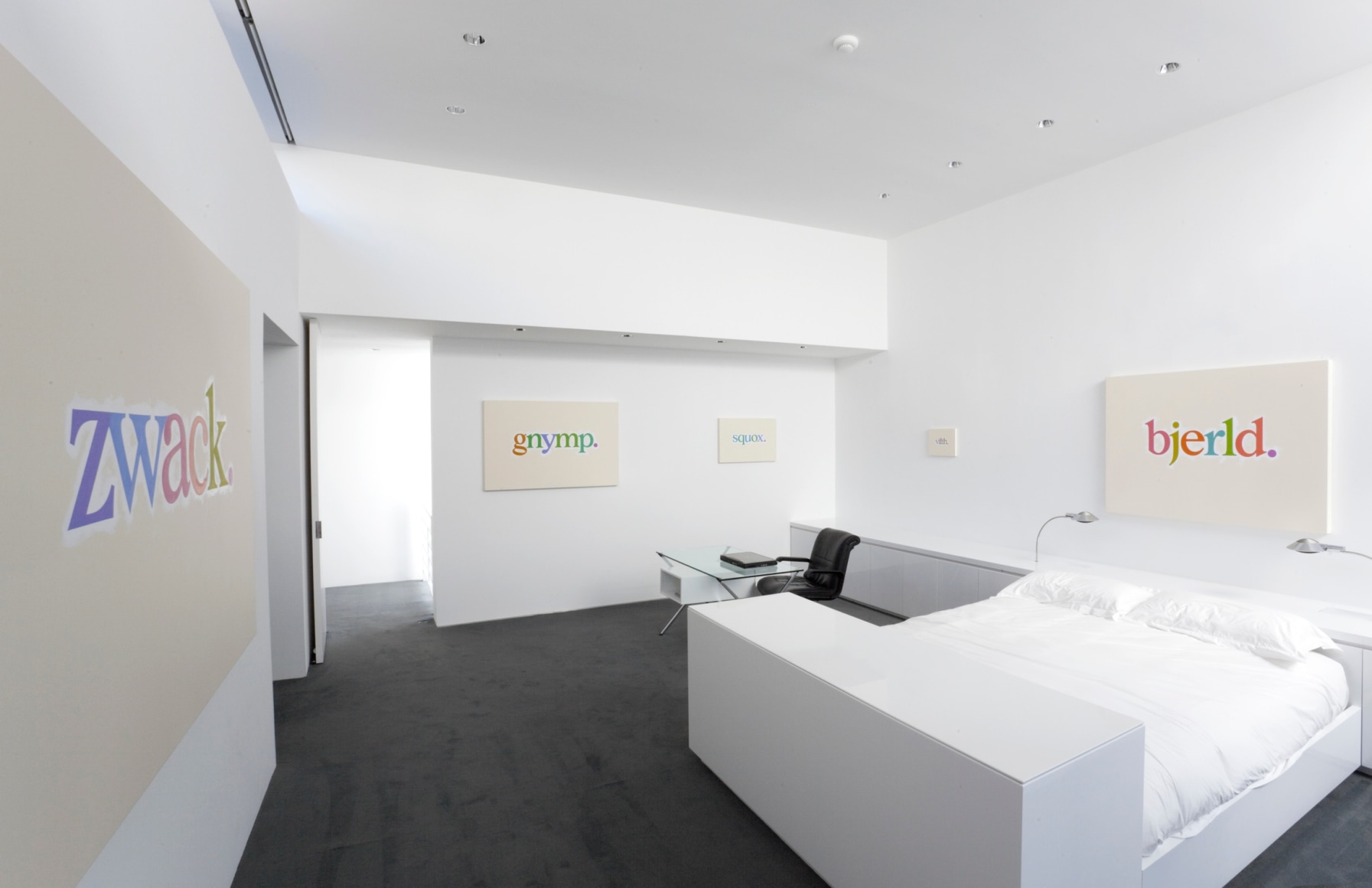Until now, each of the installations presented at The Rachofsky House has been a thematic exploration of a different aspect of The Rachofsky Collection. While the Richard Meier building has remained a remarkably inspiring architectural environment in which to experience and assess art of the last five decades, several years ago we began to wonder how a single artist might respond to the opportunity to present his or her work in this singular architectural space. We went in search of an artist whose work is of interest to the collection, who could respond to the house in a unique way that might enable visitors to experience it differently, and whose work might gain greater presence and insight in being presented here.
We could not be more thrilled with the results. Ricci Albenda has responded to The Rachofsky House in a most extraordinary way. There are a number of intersections between his work and many of the core themes of The Rachofsky Collection. His work is systemically driven. It is an inquiry into the relationships between color, form, and language. His use of words links him with Conceptual art, while it also has as much to do with pop experience and human interaction, as well as abstraction and perception. Most of the works displayed here were made in response to the building’s walls and volumes, and the flow of space both through the house and from inside to outside. The unfolding of thematic, visual, and coloristic ideas in Ricci’s work shows the house and his work as never before. The artist has created a remarkably subtle and profound fusion of art and architecture.
I thought I knew Ricci’s work well, but having now had the privilege of spending time with The quick brown fox jumps over the lazy dog, I am more acutely aware of the graceful power, intelligence, and beauty of the artist’s vision. I respect and understand his work, and the house, more than ever before.
Allan Schwartzman

